Steve's Gear History
A brief history of Steve's gear, from his first borrowed Kay combo to his brand new Fractal Audio AX8.

Kay combo (not quite the same as this one, but something similar)
I got my first guitar for Christmas '91. Metallica had just released the black album, and my friend had showed me how to play Enter Sandman in the local guitar shop after school one day. I was ready to rock! I didn't really understand that you needed an amplifier to actually hear an electric guitar, so a relative had to come to rescue with a loan of their Kay combo. It had two controls, volume and tone, and sounded exactly like what you'd expect a small combo from the 60s or 70s to sound - very clean, very boxy, and not very loud. But that was okay, it was an amp and I could play the intro to Enter Sandman.
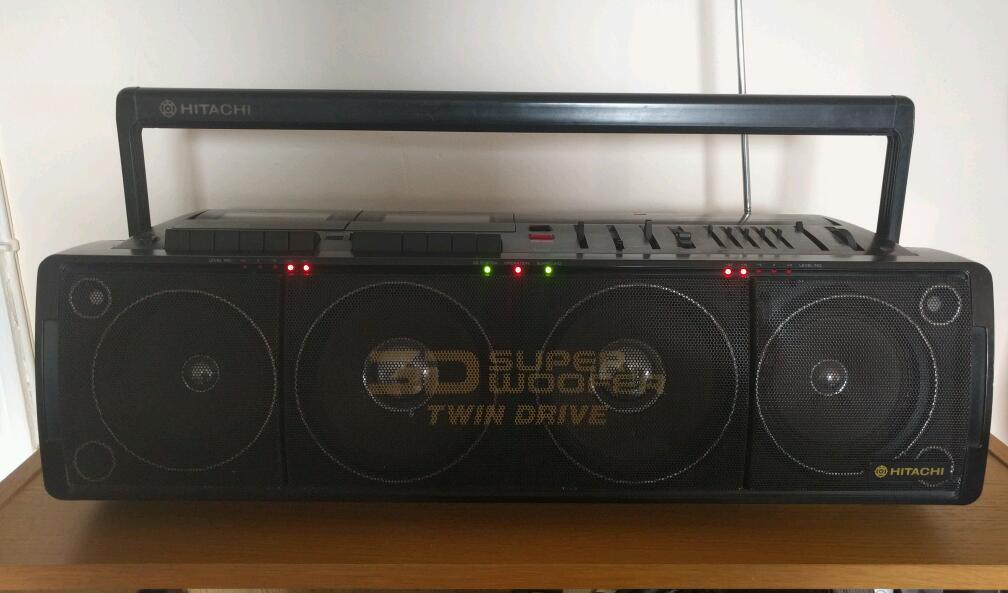
Hitachi ghettoblaster
For the rest of the song, I needed a distorted sound. By pure luck, in a quest for more volume I had connected the amp (via a socket that I believe was intended for an external speaker) to my Hitachi ghettoblaster and discovered that it went into pure fuzz - perfect! Now I really was ready for rock.
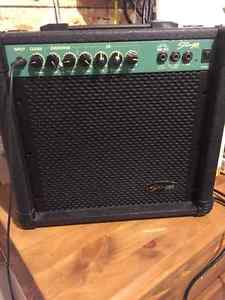
No-name 10 watt combo (not this one, but that's the general idea)
By summer '92 I had to give the Kay back, so I got myself a no-name 10watt combo. It had built in overdrive, so it must be the business, right? Well, the overdrive didn't get me all the way into the fuzzy goodness I'd had previously. By this stage I had progressed to playing the entire Metallica back catalogue, some Slayer and Megadeth, and had even joined what could be loosely described as a band. I used to put my Aria Pro II guitar in a binbag and take the bus to the other side of town for rehearsals - I was getting ready for the glamour of the heavy metal lifestyle! Anyways, the amp itself was loud enough at this point, it just needed a bit of a kick on the front end...
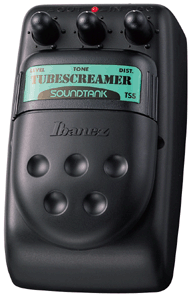
Ibanez SoundTank TubeScreamer
... so enter the Ibanez Soundtank Tubescreamer. I could switch between clean and distortion sounds and all was right with the world. At one point the speaker in the amp blew and it took about six months for the store to replace it, and in that time I plugged directly into my ghettoblaster again. But that amp and pedal were my setup for a couple of years.
Around this time I had figured out that I could use two ghettoblasters to do multitrack recording. I'd plug my Yamaha SHS10 keytar (yes, I still have it!) into the mic socket of a ghettoblaster and manually play the drum arrangement. Then I had MacGyvered a cable that would let me combine the headphone signal of the first ghettoblaster with the headphone signal from my amp, which could be connected into the mic socket on the second ghettoblaster. I could also "sing" into a set of headphones connected to the mic socket and get vocals on the tracks. By switching tapes, I could keep layering parts until the sheer amount of hiss made it unlistenable. This opened up a whole new world of opportunities, and I made lots of demos around this time. I still have some of the tapes in the attic, although that is probably where they should stay forever.
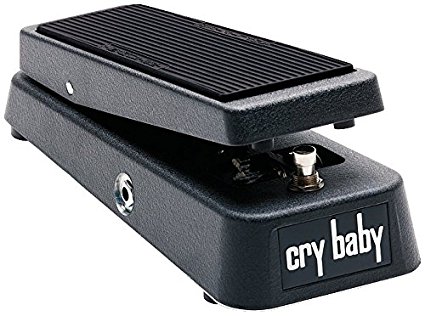
Dunlop Crybaby
What can I say, I wanted to be Kirk Hammett.
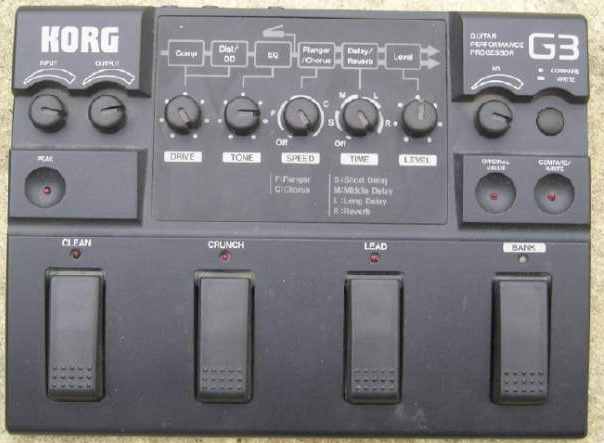
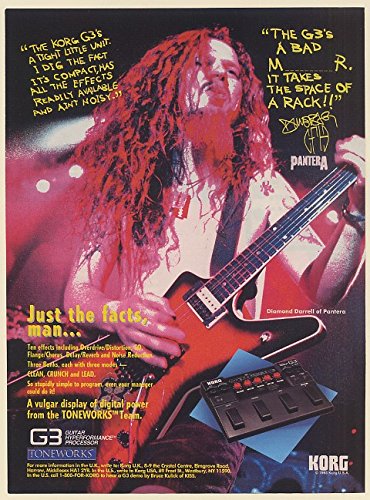
Korg G3
All of a sudden, guitar magazines all had an ad featuring Dimebag with this awesome new pedalboard, the Korg G3. Three banks with three patches per bank - that's like approximately million patches. It had clean, overdrive, distortion, chorus, flanger, phaser, delay, reverb... and Dimebag used it! Allegedly. I had to have one. I begged and borrowed, and eventually managed to get my hands on one. Didn't even try it in the store, I just got it home, plugged it in and cranked it up. And it sounded awful. Like someone had thrown a duvet over the amp. The only way to make the distorted sounds semi-decent was to turn the overdrive on the amp all the way, which meant you had to turn the volume on the clean patches to a single notch above "off" to counteract the overdrive. The effects weren't much better than the sounds, but I persevered with it for a couple of years.
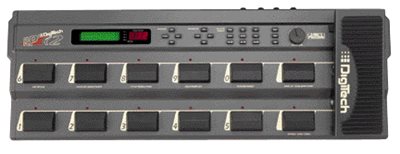
Digitech RP12
This was the game-changer. 128 patches, with proper sparkly cleans and distortion sounds ranging from grunty to fuzzy, perfect for what I was trying to do. It also had an array of effects including pitch shifting which still felt like black magic in the mid-late 90s, and an expression pedal that I could use for volume, whammy effects, or wah when the battery ran out in my CryBaby.
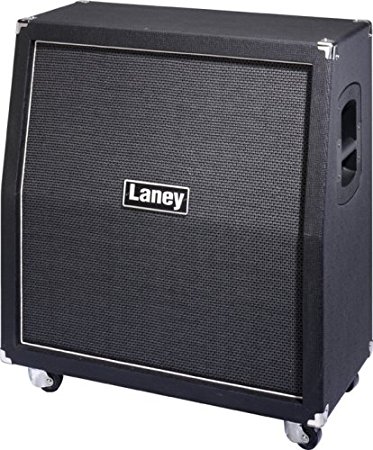
Laney 4x12
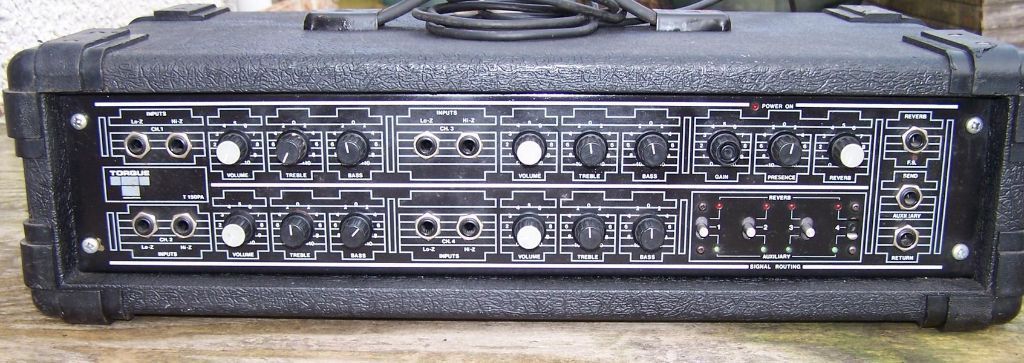
Torque 150watt power amp (not this one, mine had a single volume knob and nothing else!)
Now that I had the sounds I wanted, I just needed to make them louder. I had tried out a Marshall JCM800 with the RP12 plugged into the front of it. It sounded like total crap, and the amp actually died while I was trying it out. A valve amp wasn't going to do what I needed. I picked up a Torque 150watt power amp for next to nothing from a friend, and a Laney 4x12 cab in a water-damage sale in Marcus Music in Belfast. I remember having to literally rip the back seat out of the bass player's Nissan Micra to get the cab home. And that was my setup for all my live shows in the late 90s and early 2000 with a couple of different bands - first Stone Cold, and then Psychotribe.
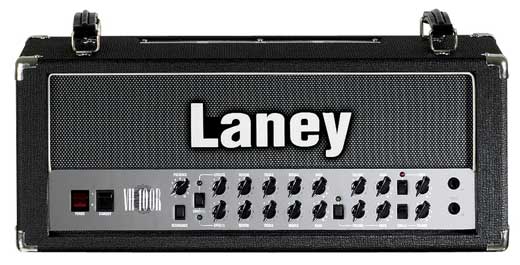
Laney VH100R
Later in 2000, I joined Riff Master General and there was a general insistence within the band that valve amps were the way to go. I already had a Laney cab, so I decided to get a Laney VH100R. A great amp, by all accounts, but I couldn't really get along with it. It actually highlighted the limitations of the matching Laney cab, so I swapped that for two Marshall 1960Bs that I still use today, which helped a lot. It's a four channel amp but for the music I play, only two of them were really usable. Moving to a two-guitar band for the first time, I needed a solo boost which required some creative thinking to get that working. One of the great things about the VH100R is its FX loop capabilities. I ended up with a volume pedal in the dirty channel's parallel FX loop, and I could then set the volume boost using the FX knob on the front panel. All the way off on the volume pedal was the loop effectively bypassed, and all the way on was the boosted signal. Being a volume pedal, I could set it somewhere in-between to get a smaller boost when required. The amp had a nice enough reverb but I was used to having more effects by this stage so...
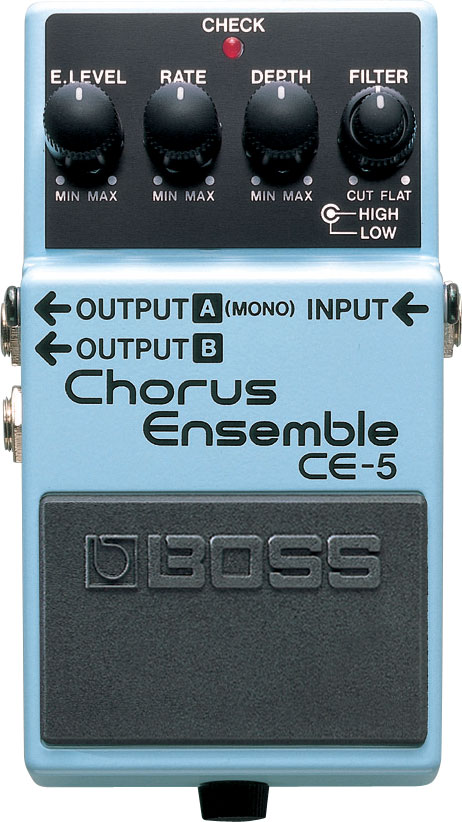
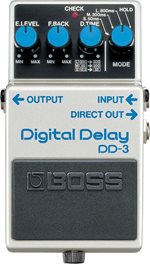
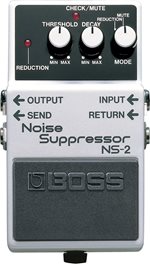
Boss CE-5, DD-3, NS-2
... I got some pedals. I had the DD3 in-line with the volume pedal so my solo boost automatically had a delay on it. I needed the NS2 because the Laney isn't exactly quiet, and I ran the CE5 in the clean channel's FX loop. All three pedals could then be left on all the time. No tap dancing required. I had one of the purple flangers too but I only plugged it in once or twice, mainly to check that it worked. I also MacGyvered a single pedal for switching between channels on the amp, as the stock Laney pedal was giant and I only used one of the four buttons. It also meant I could use a 30ft guitar cable for the switch rather than rely on a fairly flimsy 5pin MIDI-style arrangement.
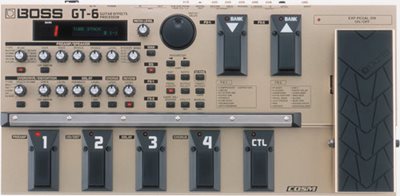
Boss GT6
I had sold the RP12 to fund the purchase of something or other, probably another guitar, so after a while I needed something I could hook up to my PC for recording demos, now that I had progressed from ghettoblasters to Cakewalk. The Boss GT6 seemed like a good idea. I mean, Boss are the pedal people, right? Wrong. Terrible sounds again, but I battled with it for a couple of years, mostly unable to get a decent sound. I had left Riff Master General and formed Fireland, which put me more in the driving seat in terms of writing the material, and I was getting into home recording more and more, but my demos sounded like demos. I guess that was to be expected for the early-mid 00s.

Behringer V-Amp Pro
In the mid 00s, I picked this up on Ebay for next to nothing as a replacement for the GT6, which I swapped for some studio monitors. I had moved onto ProTools with the intention of recording "properly" at home, and I managed to record the first Fireland album using this setup. It was never going to set the world on fire, but it sounded okay for the time, and great for the price. I still have it, and I use it when I'm too lazy to plug in my main rig.
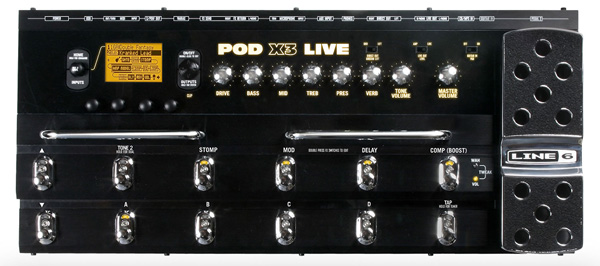
Line6POD X3 Live
I had used a POD 2.0 way back in 2001 or so when recording the Riff Master General album and it was great. Now Line6 had released this all-singing, all-dancing floorboard version with lots of updated sounds and effects. Again, I had to have one. We're at late 00's here, and it didn't take long before I had picked one up. It was another game-changing moment. I could record demos with what I thought were really good sounds, and use it live work too. Multi-functional - what's not to like?!
I ran it with the Laney using the four cable method for a while, which suffered all kinds of "tonesuck". After a while I figured out that I was better just running the X3 into the FX return of the head and using one of the amp models on the board. The Line6 Big Bottom model was killer sounding, as was the Diezel model which I have forgotten the name of. Sure, it was a bit of a waste of a valve head, but it did give me the best of both worlds in terms of digital and analogue. Along the way I joined Stormzone and started doing fly-gigs around Europe. I could just pack this board in my suitcase, turn up, plug into what head was provided and get "my" sound. Result! I recorded the third Stormzone album in 2011 using the X3 and the guitar sounds still hold up today.
In the early 10s, I had become aware of a new, high-end player in the digital modelling market - Fractal Audio. I'd seen the videos on YouTube, but no one with a mortgage and a family could afford one of those...
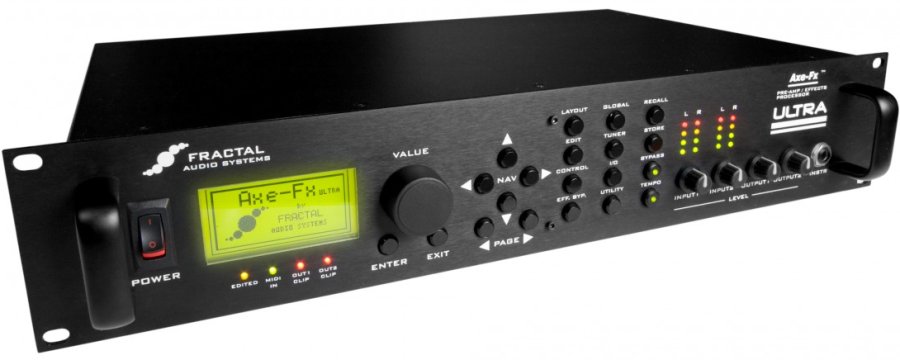
Fractal Audio AxeFX Ultra
... or could they? Around 2013, I managed to find a guy seeing an Ultra at a reasonable price. I jumped at the chance to own one. It made everything I'd heard before sound like aural vomit! This was the way forward, I was sure of that. All of a sudden, my demos sounded like properly recorded material right off the bat. I could show up to gigs with the Ultra and a MIDI pedal board, again with a MacGyvered cable with phantom power to make the stage setup as simple as possible. Whole songs were inspired by the sounds coming from the Ultra, and I recorded two albums for Stormzone and one for Fireland with it.

Rocktron Velocity 300
I couldn't be bothered dragging my massive Laney head to rehearsal just to use as a power amp, and seeing as the Ultra was rackmounted, I decided to get a Rocktron Velocity 300. It's the heaviest object in the world. Works well though, and I didn't need to worry about impedances or anything else. I could just turn up to a show, open the rack case, plug cables into whatever cabs happen to be there, and I was good to go.
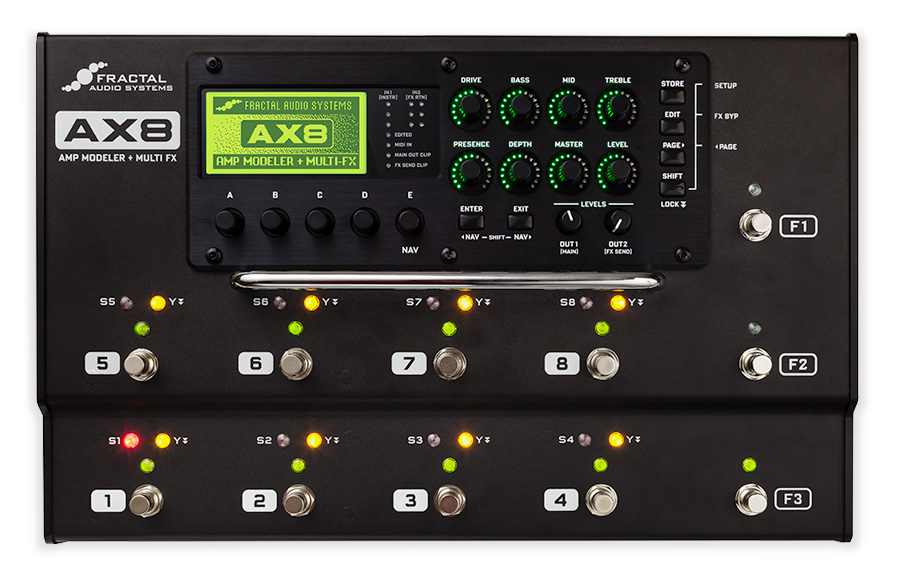
Fractal Audio AX8
In 2016, reports came out that Fractal were releasing the AX8 which would have all the sounds from the AxeFX II but in a handy floorboard format. It was probably going to be horrendously expensive, but I put my name on the waiting list, just in case. As it turned out, it wasn't all that expensive so I was one of the first people to get one. I sold the Ultra to help pay for it, and I haven't looked back. It's now my recording rig and my live rig, alongside the Velocity 300, and my fly rig too. It fits in my hand-luggage and takes 30 seconds to setup when we get on stage.